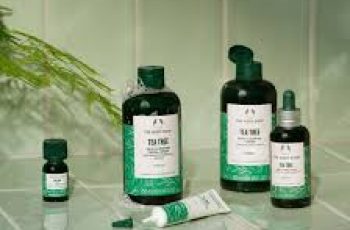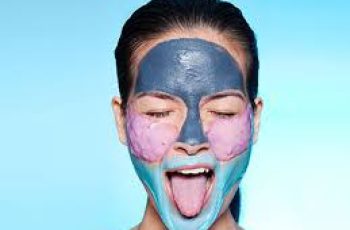
Understanding Second Puberty and Its Impact on Your Skin
Ah, puberty. That unforgettable time of life when everything changes—our bodies, our emotions, and our skin. Many of us still shudder at the memories: surprise breakouts that appeared just before big school events, the emotional rollercoaster of teenage crushes (Brandon from Year 8 Geography, are you reading this?), and the general awkwardness of figuring out how to exist in a body that didn’t seem to belong to us yet. So, when whispers of something called “second puberty” began to surface online, it’s no wonder many of us panicked.
If you’ve spent years perfecting your skincare routine, investing in hydrating serums, indulging in facials, and avoiding dairy like it’s your sworn enemy, the thought of a second round of hormonal upheaval probably doesn’t sound very appealing. After all, wasn’t one puberty enough?
So, what exactly is this so-called “second puberty,” and more importantly, how might it affect your skin?
What Is Second Puberty, Really?
Let’s start with a bit of myth-busting. Medically speaking, there is no official second puberty. It’s not a diagnosable condition, nor is it something your doctor will ever write down on a chart. That said, the term has found a comfortable home in the lexicon of those in their 20s and 30s, and for good reason. It’s the best way to describe a very real phenomenon: the hormonal changes and bodily shifts that occur after adolescence.
First puberty—the one we all remember—occurs roughly between the ages of 8 and 18 and involves major biological transformations. This includes everything from menstruation and breast development to increased testosterone, voice changes, and body hair growth. It’s triggered by the activation of the hypothalamic-pituitary-gonadal (HPG) axis and is generally a one-time process.
Second puberty, on the other hand, is more of a cultural term. It refers to the hormonal fluctuations and physical transformations that tend to take place in your 20s and 30s. These changes aren’t as dramatic as those experienced during adolescence, but they are significant nonetheless. They are often triggered by various life events: going off or starting birth control, pregnancy, postpartum changes, major lifestyle shifts, and even chronic stress.
In short, second puberty isn’t a medical condition, but it is a very relatable experience, and it often includes an unexpected reappearance of acne, changes in skin texture, and the onset of other skin-related challenges.
So, How Exactly Does Second Puberty Affect the Skin?
The effects of hormonal fluctuations can be far-reaching, and one of the first places they tend to show up is on the skin. Let’s break down the most common skin-related issues people face during this period of hormonal change, along with how to treat them effectively.
1. Adult Acne and Breakouts
One of the most common complaints associated with second puberty is the resurgence of acne. Just when you thought you’d left those angry red spots behind in your teenage years, they suddenly make a comeback—with a vengeance. But this time, they might be showing up in different places, like your jawline, chin, or neck—areas often linked to hormonal imbalance.
Causes:
Hormonal imbalances (e.g., estrogen and androgen fluctuations)
Birth control changes
Stress-related cortisol spikes
Poor sleep or diet
Underlying medical conditions such as PCOS or endometriosis
What to Do:
Cleansing: Use gentle, yet effective cleansers that contain salicylic acid or its natural counterpart, willow-bark extract. These ingredients exfoliate the skin and help unclog pores.
Exfoliation: Regular chemical exfoliation (using AHAs or BHAs) helps reduce clogged pores and brightens the skin.
Masks: Try incorporating a clay-based detoxifying mask once or twice a week to draw out impurities and manage oil production.
Consistency: Stick to a routine, and avoid switching products too frequently, which can worsen irritation.
2. Loss of Elasticity and Firmness
Unlike in our teens, where plump, bouncy skin was the norm, adults going through second puberty may begin to notice that their skin feels less firm and more prone to fine lines. This is partly due to a gradual decline in collagen and elastin production, two essential proteins that maintain skin’s structure and elasticity.
Causes:
Natural aging process
Dehydration
Slower skin cell turnover
Environmental stressors (pollution, UV rays)
What to Do:
Hydration: Layer a hydrating serum (like hyaluronic acid) beneath a rich facial oil or moisturizer to seal in hydration.
Barrier Protection: Strengthen your skin’s moisture barrier with ingredients like ceramides, squalane, and fatty acids.
Firming Creams: Use products containing peptides and niacinamide, which can visibly improve skin texture and elasticity.
Retinoids: Consider incorporating a Vitamin A derivative like retinol or retinaldehyde. These compounds help boost collagen production, speed up cell renewal, and address both acne and signs of aging.
3. Hyperpigmentation and Sun Damage
As we age, our cumulative sun exposure begins to catch up with us. Even if you were meticulous about sunscreen in your 20s (and let’s be honest—most of us weren’t), small sunspots and pigmentation might still start appearing on your cheeks, forehead, and even shoulders.
Causes:
Long-term sun exposure
Unprotected time outdoors
Hormonal changes (especially melasma during pregnancy)
Inflammation or skin trauma leading to post-inflammatory hyperpigmentation
What to Do:
SPF: Daily use of a broad-spectrum sunscreen with at least SPF 30 is non-negotiable. Reapply every two hours if you’re outside.
Vitamin C: This powerhouse antioxidant helps fade existing dark spots, neutralizes free radicals, and brightens the overall skin tone.
Exfoliation: Gentle chemical exfoliants like lactic acid or mandelic acid can gradually lighten hyperpigmentation over time.
Skin Checks: Regularly examine your skin for new or changing moles, and book an annual skin check with a dermatologist. Early detection of skin cancer can save lives.
Can You Prevent Second Puberty?
Unfortunately, no. Just like you couldn’t avoid the first puberty, the hormonal changes that define second puberty are largely inevitable. That said, there are steps you can take to support your body and skin through the process.
Maintain a balanced diet: Focus on whole foods, antioxidants, and omega-3-rich ingredients that support skin health.
Get regular sleep: Hormones are heavily influenced by your sleep patterns. Poor rest can throw your entire system off balance.
Manage stress: Whether it’s yoga, journaling, walking, or therapy, managing cortisol levels helps regulate your hormones.
See a professional: If you’re experiencing severe acne, sudden hair growth/loss, or intense emotional shifts, consult with a healthcare provider. They may recommend hormone testing or specialized treatment plans.
Embracing the Changes
Second puberty might feel like a cruel joke—just as we get a handle on adulthood, our skin decides to rebel. But it’s also a beautiful reminder that our bodies are dynamic, evolving entities. These changes, while sometimes frustrating, reflect a new stage of growth, wisdom, and transformation.
It’s important to be patient and kind to yourself during this process. Skincare isn’t just about looking good—it’s about taking time to care for yourself. To pause, breathe, and acknowledge that your body is doing its best with the resources it has.
So, no—you can’t stop second puberty. But with the right knowledge, a thoughtful skincare routine, and a commitment to self-care, you can move through it gracefully, glowing every step of the way.
Because if there’s one thing that’s true at every age, it’s this: You deserve to feel confident in your own skin.


